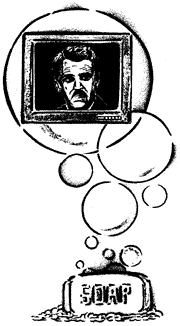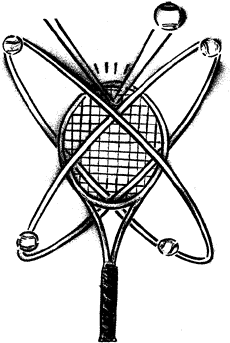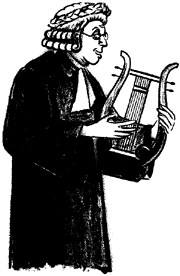News from academe.

Yoknapatawpha TV
This year marks the centennial of William Faulkner's birth and the Web release of some of his lost hack work. A graduate student at the University of Illinois at Springfield stumbled upon two teleplays by the Nobel Prize-winning author--Faulkner's only known forays into the genre--while researching his master's thesis, YoknapatawphaTV, at a Duke University archive. The teleplays, adaptations of undistinguished short stories by the author, aired in 1953 and 1954 on Lux Video Theatre, a dramatic series sponsored by the makers of Lux soap. To appease censors, Faulkner eliminated a suicide from TheBrooch, and to update the appeal of Shall Not Perish, he changed the setting from World War II to the Korean War. The first pages of both teleplays are available on the Web but, as a columnist in the Raleigh, N.C., News & Observer remarked, "based on the response of critics, Faulkner might have wished these scripts had remained lost."
Red, White, and Tawny
It is commonly taught that Europeans invented the concept of race and color-coded the world's peoples. Not according to Nancy Shoemaker, an assistant professor of history at the University of Wisconsin at Eau-Claire. In the June issue of American Historical Review, she debunks the standard accounts of how the American Indians became "red." (Traditional explanations include European encounters with Indians wearing red paint, or else the creative labeling system of 18th-century Swedish naturalist Carolus Linnaeus.) Shoemaker cites English and French diplomats' diaries and treaty records from the 1720s to argue that American Indian tribes came up with the label themselves. The transcript of a peace treaty between the Chickasaws and the Cherokees in 1726, for example, features the phrase "red people" only within speeches by Indian delegates. Besides, Shoemaker writes, Europeans at the time usually described Indians not as red but as "tawny."

Pete Sampras' Secret
Rod Cross, a tennis-obsessed Australian physicist, went to the lab to figure out the science behind Pete Sampras' power serve. Top players have found that the best serve comes from the tip of the racket. But why? Cross put his own racket in a vise grip and hooked it up to instruments designed to measure the bounce of a ball dropped from 50 centimeters onto the strings at various points. He found, as he reports in the American Journal of Physics, that Sampras' famous serve is generated by a "dead spot" five centimeters from the tip of the racket, where the ball doesn't bounce at all. The explanation is basic physics: At the dead spot, 100 percent of the ball's energy is transferred to the racket, which, were it in full swing on a tennis court, would return the energy to the ball, guaranteeing a power serve. For returns, however, the dead spot is no good; it would just absorb all the ball's energy.
Braving the Elements
Twenty years of Cold War bickering over who gets to name certain disputed elements of the periodic table has ended in a compromise befitting the new world order--or almost. According to a recent article in Science, Americans, Russians, and Germans all claimed proprietary rights to the elements 104 to 110 until last month, when the International Union of Pure and Applied Chemistry ("chemistry's high court") handed down its decisions. The Americans will claim elements 104 (rutherfordium, after physicist Ernest Rutherford) and 106 (seaborgium, after nuclear physicist Glen Seaborg); the Russians get element 105 (dubnium, after the Joint Institute of Nuclear Research in Dubna, Russia); and the Germans 107 to 109 (respectively bohrium, after Danish quantum physicist Niels Bohr; hassium, after the German state of Hesse, where it was discovered; and meitnerium, after German physicist Lise Meitner). Element 110 remains under dispute.

Poetry for Lawyers
Who says a creative-writing MFA is a sure path to permanent unemployment? The London law firm Mishcon de Reya--whose star attorney, Anthony Julius, last year wrote a polemical book about T.S. Eliot's anti-Semitism--has hired its first poet-in-residence. According to the London SundayTelegraph, 35-year-old Lavinia Greenlaw will be paid £10,000 a year to appear at the firm once a week and hold regular writing workshops for the firm's barristers. Greenlaw's appointment, explains a company spokeswoman, marks Mishcon's commitment to nurturing both "struggling artists" and "plainspoken English" in a profession dominated by legalese. With several writing awards under her belt and her second collection of poems on the way, Greenlaw beat out more than 100 other applicants for the job. But London poets should remain hopeful: The upscale retailer Marks & Spencer and a local soccer club are both seeking bards.
Going Negative
Traditionally, when clinical trials of a drug produced negative results--that is, failed to show that treatment A is better than treatment B--they simply weren't published. Conventional wisdom was that only positive findings could tell us anything. No longer. A new technique called "meta-analysis," which collates and analyzes all the different studies of a given subject--including the duds--is rapidly supplanting the old method of considering just positive results. According to New Scientist, 100 leading science journals announced a global "trial amnesty" on unpublished findings last month, encouraging researchers to submit studies--no questions asked--that they might otherwise be embarrassed to own up to. Experts say there may be 50,000 such studies languishing in obscurity that could be put into a central database and collectively mined for useful findings.